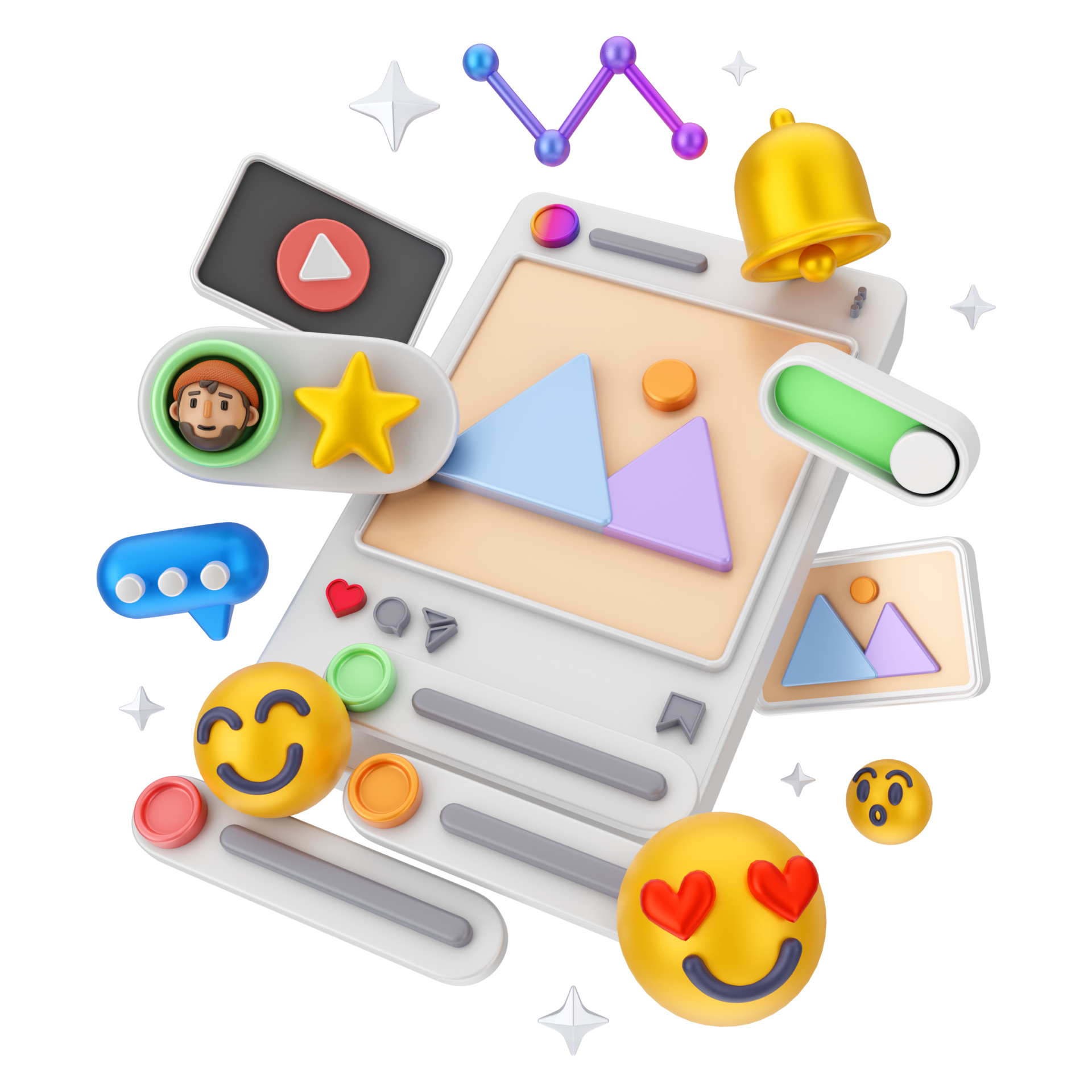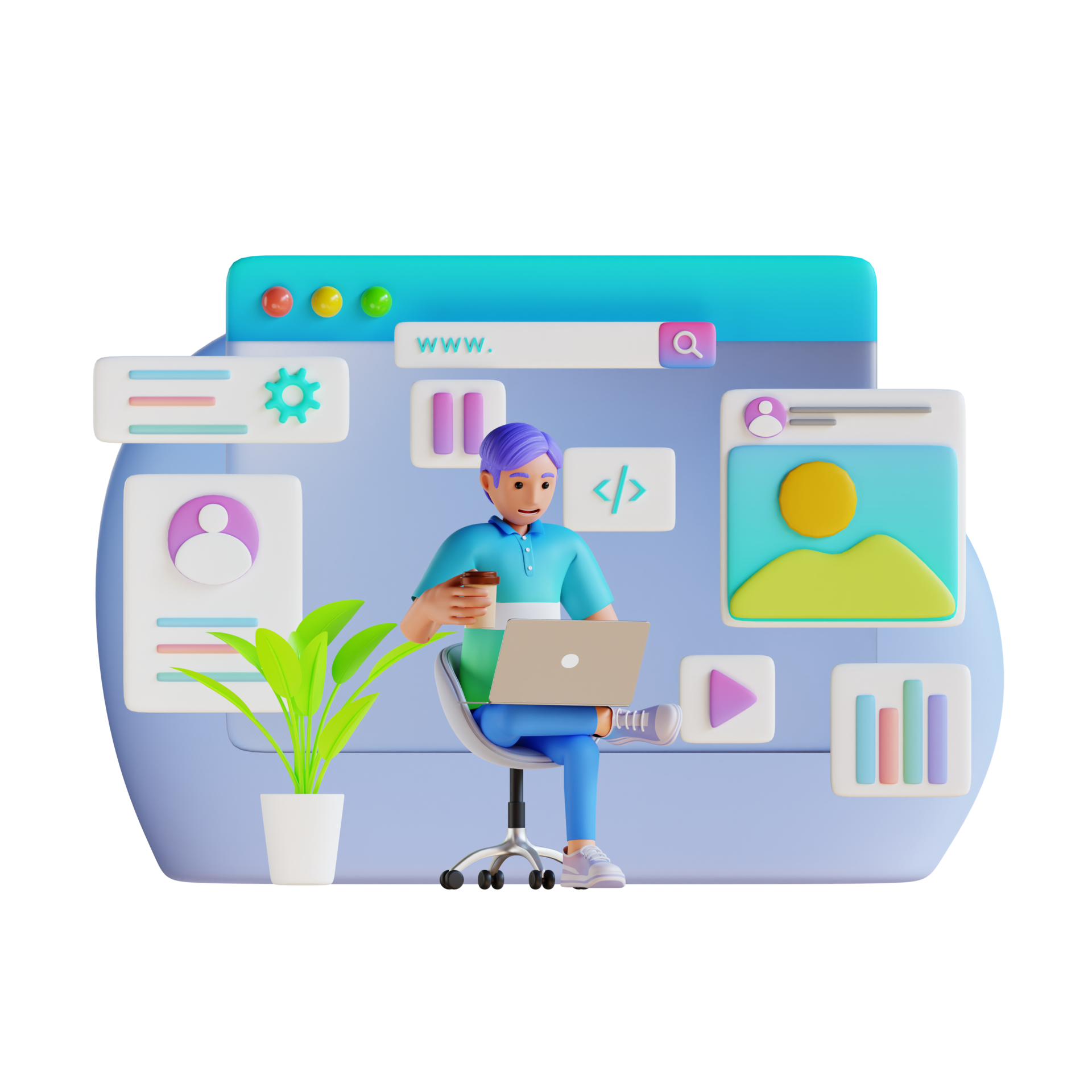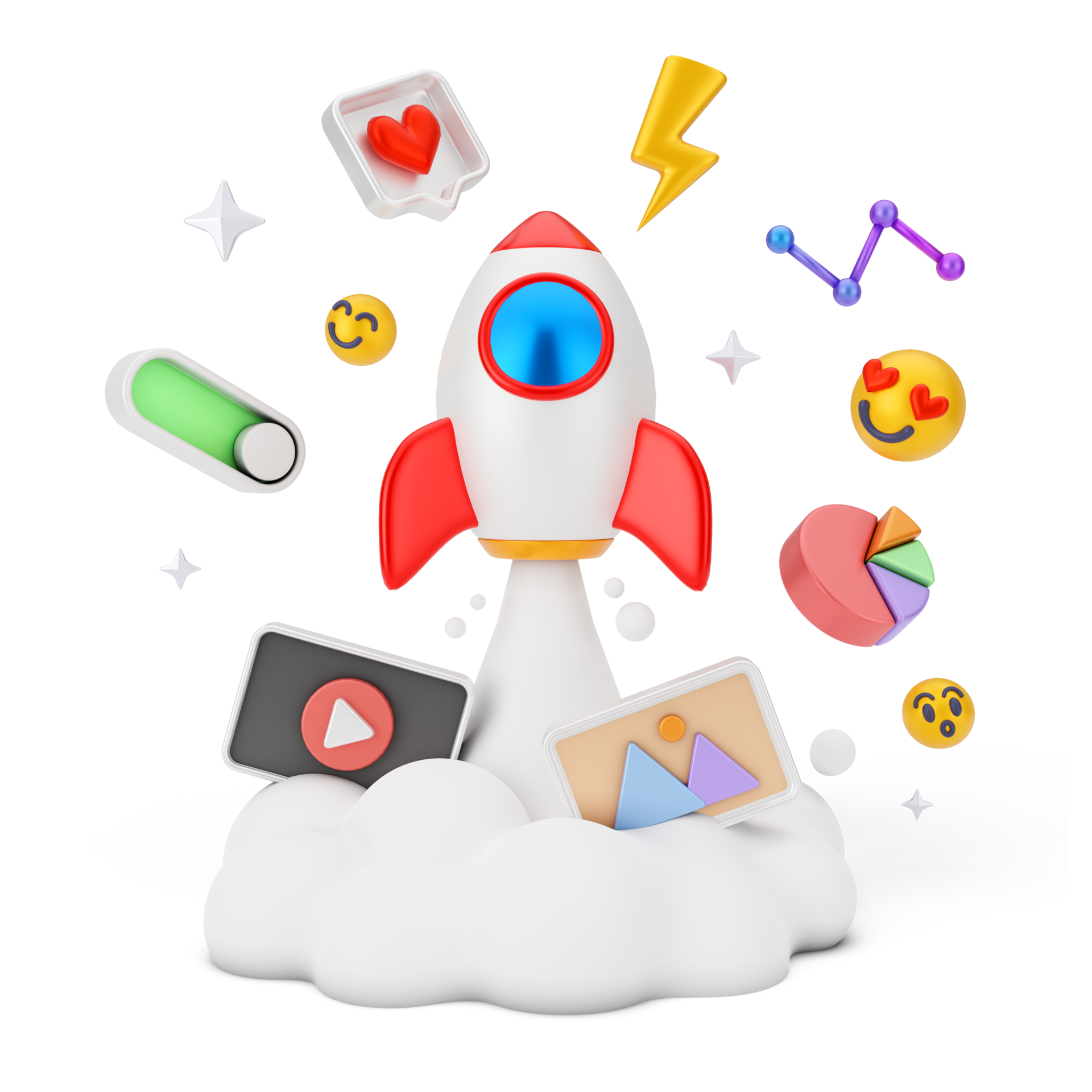Introduction: Social media has become a critical channel for businesses to engage with their audience, but not all social media strategies are created equal. One of the most common questions brands face is whether to focus on paid social media or organic social media efforts. In this blog, we’ll break down the pros and cons of both approaches, and help you decide where to invest your time and resources. The Case for Organic Social Media: Organic social media refers to the unpaid content you share on your social channels, including posts, photos, and videos. This strategy is centered on building a community, engaging with your audience, and maintaining a consistent brand presence. Pros: Builds Long-Term Relationships: Organic social helps you nurture a loyal audience by regularly interacting with them. Authentic Engagement: It’s great for fostering genuine engagement with your audience through comments, likes, and shares. Cost-Effective: Organic content doesn’t require a financial investment, making it a low-risk way to grow your presence. Cons: Limited Reach: Social media algorithms often limit the reach of organic posts, especially for business accounts. Takes Time: Building an organic following requires consistency and patience, which can take months or even years to yield significant results. The Case for Paid Social Media: Paid social media involves investing in advertising campaigns on platforms like Facebook, Instagram, LinkedIn, and TikTok. It allows you to reach a wider, more targeted audience quickly. Pros: Immediate Reach: Paid campaigns offer instant visibility, putting your brand in front of a larger and more targeted audience. Detailed Targeting Options: Social media platforms allow for highly specific audience targeting, based on factors like demographics, interests, and behaviors. Scalable: You can adjust your budget and scale campaigns based on performance and business needs. Cons: Costs Add Up: While effective, paid campaigns can become expensive, especially without proper management or clear goals. Short-Term Impact: Paid ads drive quick results, but the benefits tend to diminish once the campaign ends. Combining Both Strategies: The most successful brands don’t see paid and organic social media as an “either/or” scenario. Instead, they use a combination of both. Organic content helps build a loyal community over time, while paid campaigns are ideal for quick bursts of growth and targeted messaging. Conclusion: Both organic and paid social media have their place in a successful digital marketing strategy. To maximize your social media efforts, use organic posts to engage and nurture your existing audience, and boost your reach with paid campaigns when you need to drive immediate results.
The Power of Personalization: How Tailored Content Drives Engagement
Introduction: In today’s digital age, consumers expect more personalized experiences than ever before. Generic, one-size-fits-all content is no longer effective in capturing the attention of your audience. Instead, businesses that use tailored content can significantly boost engagement and foster lasting customer relationships. In this post, we’ll explore the power of personalization and how you can use it to improve your digital marketing efforts. Why Personalization Matters? Personalization is all about delivering the right content, to the right person, at the right time. With an overwhelming amount of information available online, personalized experiences help cut through the noise and make your brand stand out. Research shows that personalized marketing efforts can increase customer satisfaction and conversion rates. Strategies for Personalization: Segment Your Audience: Use customer data to create specific audience segments based on behavior, interests, and demographics. By understanding who your audience is, you can tailor content to meet their needs. Dynamic Content: Dynamic content allows you to display personalized messages to different audience segments. For example, a returning visitor might see tailored product recommendations based on their previous browsing behavior. Email Personalization: Personalized email marketing, such as addressing the recipient by name or offering custom product recommendations, can increase open and click-through rates significantly. Interactive Experiences: Use quizzes, polls, and other interactive elements to gather information from your audience in real-time. The data collected can then be used to provide a more personalized experience. Benefits of Personalization: Improved Engagement: Personalized content resonates better with audiences, leading to increased engagement with your brand. Higher Conversion Rates: Consumers are more likely to make a purchase when they feel like the product or service is specifically tailored to them. Customer Loyalty: Providing a personalized experience builds trust and fosters customer loyalty over time. Conclusion: The future of digital marketing is all about personalization. By taking the time to understand your audience and delivering tailored content, you can enhance engagement, drive conversions, and build stronger relationships with your customers.
5 Digital Marketing Trends to Watch in 2024
Introduction: As we move into 2024, the digital marketing landscape continues to evolve at a rapid pace. To stay ahead, businesses need to be aware of the emerging trends that will shape the way they interact with audiences online. In this post, we’ll explore five key trends set to dominate the digital marketing space in 2024 and how your business can leverage them for success. 1. AI and Machine Learning in Marketing Artificial intelligence (AI) and machine learning are revolutionizing digital marketing by providing data-driven insights and automating tasks like content creation and customer segmentation. Businesses that adopt AI tools will have a competitive edge in delivering personalized and timely campaigns. 2. The Rise of Video Commerce Shoppable videos are becoming increasingly popular, blending entertainment with e-commerce. Platforms like Instagram and TikTok are pushing video commerce forward, making it easier for users to purchase products directly from video content. 3. Privacy-First Marketing With growing concerns over data privacy, marketers must prioritize transparency and consent in their data collection practices. Strategies that balance personalization with user privacy will build trust and foster long-term customer relationships. 4. Voice Search Optimization Voice search continues to grow, with more users relying on smart speakers and voice-activated assistants. Businesses need to adapt their SEO strategies to include voice search queries, which are often more conversational and longer in form. 5. Sustainable Marketing Consumers are increasingly drawn to brands that reflect their values, especially regarding environmental sustainability. Companies that prioritize eco-friendly practices in their messaging and operations will resonate more with conscious consumers in 2024. Conclusion: To stay competitive in 2024, brands must embrace these trends while staying agile enough to adapt to future shifts. By leveraging AI, embracing video commerce, and being mindful of privacy and sustainability, your business can stay ahead of the curve.
How AI is Revolutionizing Digital Marketing: Transforming Strategies for the Future
Introduction: Artificial Intelligence (AI) is rapidly transforming the landscape of digital marketing, providing businesses with innovative tools and strategies to reach, engage, and convert their audiences. From personalized customer experiences to automating repetitive tasks, AI is reshaping how brands interact with consumers. 1. Personalized Customer Experiences AI enables marketers to deliver highly personalized content, products, and recommendations to users based on their browsing behavior, preferences, and purchase history. This level of personalization increases customer engagement and boosts conversion rates. 2. Predictive Analytics AI-powered predictive analytics tools analyze historical data to forecast future trends and customer behavior. Marketers can use these insights to make data-driven decisions, optimize campaigns, and anticipate customer needs more accurately. 3. Automated Customer Interactions AI-driven chatbots and virtual assistants are becoming common in customer service. These tools offer 24/7 support, provide instant responses to queries, and can guide users through the buyer’s journey, improving the overall customer experience. 4. Enhanced Ad Targeting AI helps businesses optimize their ad targeting by analyzing vast amounts of user data. AI algorithms can identify specific audience segments and deliver ads tailored to their interests, maximizing the relevance and impact of PPC and social media campaigns. 5. Content Creation and Curation AI can generate content for marketing campaigns, from product descriptions to personalized email copy. Tools like natural language processing (NLP) can also curate content, suggesting relevant materials based on user preferences, saving marketers time and resources. 6. Voice Search Optimization With the growing popularity of voice search, AI helps marketers optimize their content for voice queries. AI-driven insights ensure that content is structured to match the natural, conversational tone of voice searches, improving search rankings. 7. Social Media Monitoring and Sentiment Analysis AI tools can monitor social media channels in real time, analyzing user sentiment and identifying trends. This helps marketers understand their audience’s emotions, preferences, and responses to content, allowing for more strategic engagement. 8. Programmatic Advertising AI has revolutionized programmatic advertising by automating the ad-buying process. AI algorithms make real-time decisions on where and when to display ads, optimizing cost and maximizing reach based on user data and behavior. 9. Email Marketing Optimization AI enhances email marketing by optimizing subject lines, content, and send times for individual users. AI-driven email platforms analyze user interactions and adjust campaigns to increase open and click-through rates. 10. Improved SEO Strategies AI-driven SEO tools provide real-time insights into how search engine algorithms work, enabling marketers to optimize their websites more effectively. AI helps identify relevant keywords, content gaps, and technical SEO improvements. Conclusion: AI is no longer just a futuristic concept; it’s a powerful force that’s revolutionizing digital marketing. By leveraging AI, businesses can enhance their marketing strategies, improve customer experiences, and stay ahead in an increasingly competitive landscape. Embracing AI in digital marketing is essential for brands looking to thrive in the digital age.
The Power of Content Pillars: Building a Strong Foundation for Your Brand’s Success
Introduction: Content pillars are the key themes or topics around which your brand’s content strategy is structured. These core topics reflect your business objectives and resonate with your target audience. They act as the foundation for all content creation efforts, allowing your brand to consistently deliver valuable and relevant information. Importance of Content Pillars: Content pillars ensure that all content aligns with the brand’s message, creating consistency across different platforms. This helps build trust with your audience. They provide a clear framework, helping teams generate focused, relevant content faster while preventing topic overlap. By consistently creating content around a few core pillars, you enhance your site’s SEO performance, making it easier for your audience to find you online. Content pillars ensure you deliver value to your audience by addressing their interests, needs, and challenges, boosting engagement. With clear topics, your messaging stays on-point, ensuring your audience understands what your brand stands for and offers.
10 Ways to Maximize Your PPC Strategy for Unmatched ROI
Introduction: Pay-per-click (PPC) advertising is a powerful way to drive targeted traffic to your website, but optimizing your strategy is key to getting the most value out of your ad spend. This guide covers ten actionable tips to help you maximize your PPC performance and boost your ROI. 1. Set Clear Goals and KPIs Define your objectives, whether it’s increasing conversions, brand awareness, or traffic. Establish key performance indicators (KPIs) to measure the success of your PPC campaigns. 2. Conduct Thorough Keyword Research Use tools like Google Keyword Planner to find high-intent, low-competition keywords that are relevant to your products or services. Focus on long-tail keywords to attract more qualified leads. 3. Optimize Ad Copy for Relevance and Quality Create compelling ad copy that speaks directly to your audience’s needs and includes your target keywords. Strong calls-to-action (CTAs) are essential for driving clicks. 4. Leverage A/B Testing Continuously test different versions of your ads (headlines, descriptions, CTAs) to identify what works best. A/B testing helps optimize your click-through rates and conversions. 5. Refine Targeting with Audience Segmentation Take advantage of demographic and interest-based targeting to reach the right audience. You can further segment by behavior, location, or device for more personalized ad delivery. 6. Utilize Negative Keywords Negative keywords prevent your ads from appearing in irrelevant searches, helping you focus your budget on queries that are more likely to convert. 7. Optimize Landing Pages for Conversions Ensure that your landing pages are aligned with your ad copy and provide a seamless user experience. Fast loading times, clear CTAs, and mobile optimization are critical for conversion rates. 8. Monitor and Adjust Bids Regularly Keep a close eye on your bidding strategy. Adjust your bids based on the performance of keywords, devices, or times of the day to maximize cost-efficiency. 9. Use Remarketing Campaigns Remarketing allows you to re-engage users who have previously visited your site but didn’t convert. Tailor ads to specific audience segments for higher conversion rates. 10. Analyze and Adapt Based on Data Continuously track your PPC campaign data and make adjustments based on performance. Tools like Google Analytics can help you analyze which ads, keywords, or audience segments are yielding the best results. Conclusion: A successful PPC strategy requires ongoing optimization, experimentation, and a deep understanding of your target audience. By implementing these 10 tips, you can significantly improve your campaign performance and drive higher returns on your investment.




